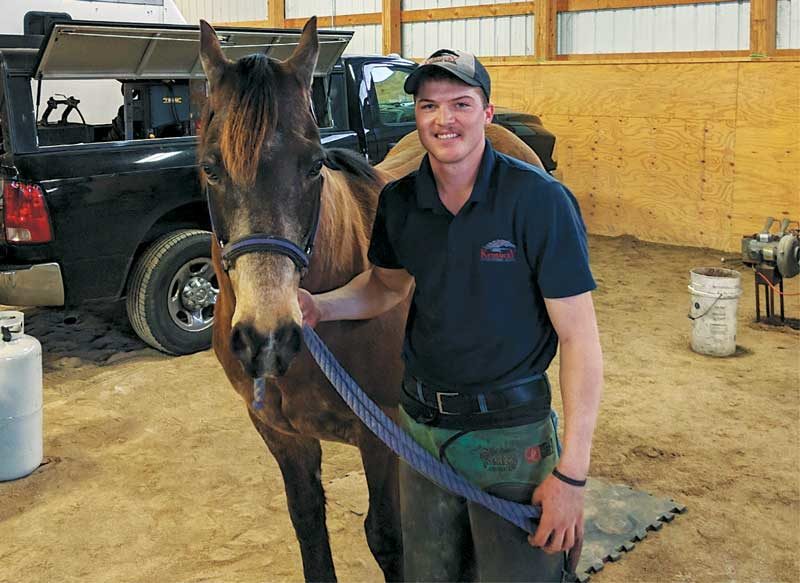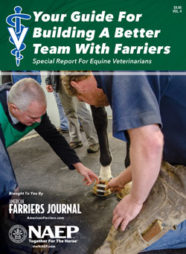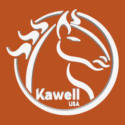Pictured Above: Ben Barhorst of Lexington, Ky., advises speaking up about foot health issues to be proactive instead of reactive.
Farrier Takeaways
- Communicating with clients is critical. Speak up and be honest, especially when it comes to the foot. It’s easier to prevent a problem than to react to one.
- People hire you for your footcare knowledge, not just your ability to use sharp tools. If the horse doesn’t need a trim, don’t trim.
- The only guarantee that comes from focusing on speed are mistakes and poor work.
Completing farrier school represents a significant accomplishment. It also represents a significant step as a full-time professional and, most often, small business owner. You will face challenges that will test your resolve. The good news is that there are resources to help — your fellow farriers.
American Farriers Journal established the Rising Shoeing Star award program in 2008. This program recognizes farriers making incredible progress in their first 3 years after farrier school. In partnership with industry suppliers, the program highlights the importance of education. Program co-sponsors for 2020 include Adeptus Nutrition Inc., American Farriers Journal, Dechra Veterinary Products, G.E. Forge & Tool, Pyranha and Texas Farrier Supply.
This year’s winners are Ben Barhorst of Lexington, Ky.; Audrey Williams of Edmonton, Alberta; and Gary Gullo Jr. of Old Brooksville, N.Y. Barhorst was awarded the top honor at the 2020 International Hoof-Care Summit. The Kentucky Horseshoeing School alumnus shares his experiences and advice for new farriers.
Q:
What were some of the major obstacles
you faced and how did you overcome them?
A:
One of the biggest obstacles was determining the worth of my work. There’s a battle inside my head between the thought that I can’t expect clients to pay normal prices for someone so green and the thought I’m confident enough in my work/results that I can comfortably charge those prices. After talking to more experienced farriers, confidence ended up being the answer. Be confident in your work, set your number and stick to your guns.
Another obstacle was client communication. Whether setting up appointments, trying to explain the importance of a regular trim schedule, or communicating a potential foot problem, I had the bad habit of just staying quiet.
While I’m still improving, I’ve found that it’s better when I speak up and am honest, especially when it comes to the foot. It’s easier to prevent a problem, than react to one.
Q:
What were some of your early
mistakes and how did you learn from them?
A:
One mistake I made was taking too much foot. I would show up and trim a horse that didn’t really need to be trimmed. You feel like the client is paying you to trim the horse so you have to do something. But clients hire you for your footcare knowledge, not just your ability to use sharp tools.
Another mistake I made, and still make, is going too fast. Whether trimming the foot, forging or shaping a shoe, or nailing up, the only guarantee that comes from focusing on speed are mistakes and poor work.
One of the best pieces of advice I’ve received was to go faster by slowing down. If you do something right the first time, you won’t make mistakes that you then have to spend more time fixing. Speed comes with experience, and experience comes with time.
Q:
What were some of the smartest decisions you
made getting started and why were they so important?
A:
I think one of the smartest decisions I made was to continue focusing on honing my forging skills. Whether building or shaping shoes, or making tools, I value my knowledge at the anvil just as much as my knowledge under the horse. Knowing how to effectively build a safe shoe from bar stock makes shaping and fitting keg shoes easier.
Another decision that helped me was putting my work before others to be judged. Whether competing at farrier contests or going through a certification process, letting more experienced farriers critique my work and offer advice has been invaluable. I’ve never come home from a contest, certification, or clinic where I didn’t learn at least one new thing.
Nominate a Rising Shoeing Star
To nominate a new farrier who graduated from footcare school in 2018, please send a 2- or 3-page letter explaining why he or she is a candidate for the 2022 Rising Shoeing Star award. The deadline for nominations is July 31, 2021.
Mail your nomination to American Farriers Journal, P.O. Box 624, Brookfield, WI 53118-0624 or email it to kkubisiak@lessitermedia.com.







